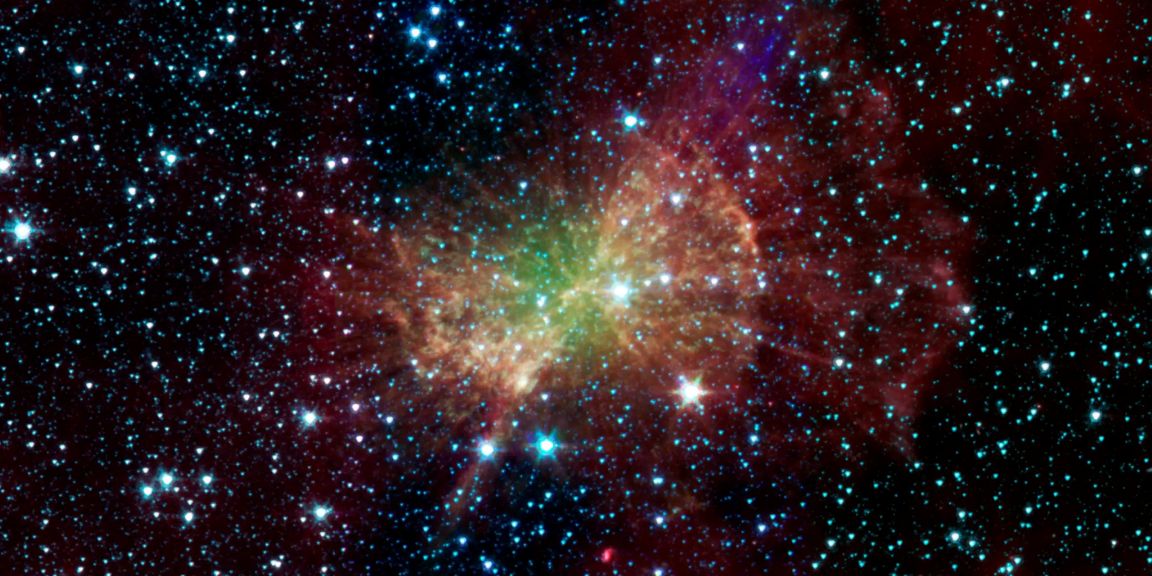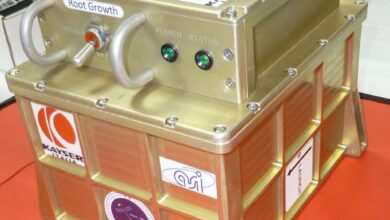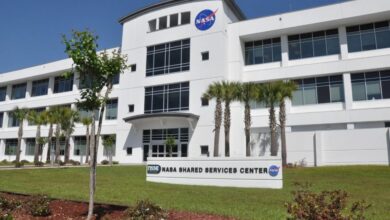NASA Supports California Students Aiming to Advance Technology
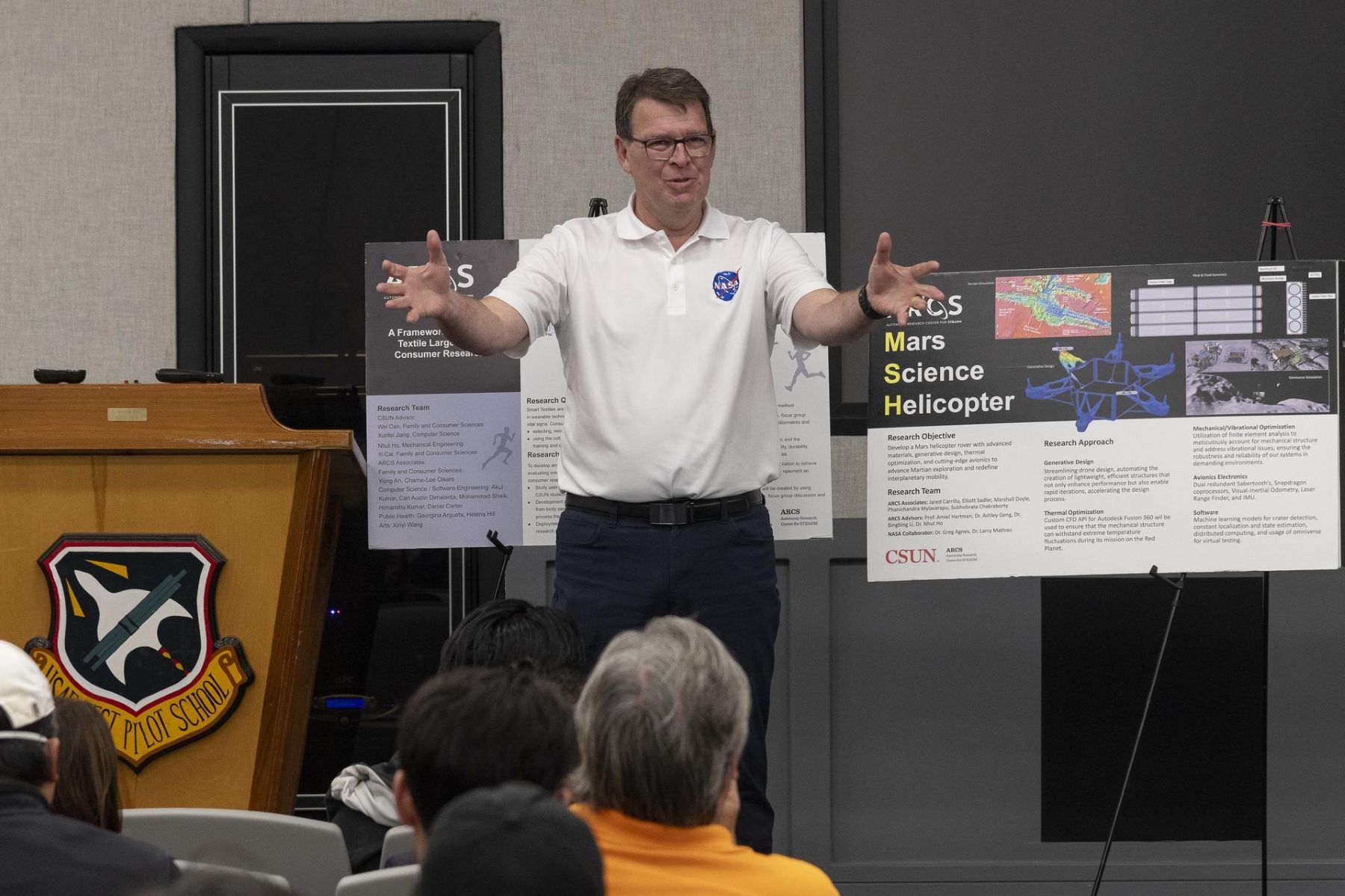
Students from a minority-serving university in California are helping solve challenges of autonomous systems for future drone operations on Earth and other planets. These students are making the most of opportunities with NASA, the U.S. Department of Defense, and industry, focusing on autopilot development and advanced systems that adapt and evolve.
Students from California State University, Northridge, who are part of the university’s Autonomy Research Center, displayed and discussed their research with posters highlighting the technology they developed at a recent event at Edwards Air Force Base in Edwards, California. A Mars science helicopter, mini rovers for science exploration, and 3D printed sulfur concrete for Mars habitats are some of their projects, and they answered questions from experts in the field on May 23 at the Air Force Test Pilot School auditorium.
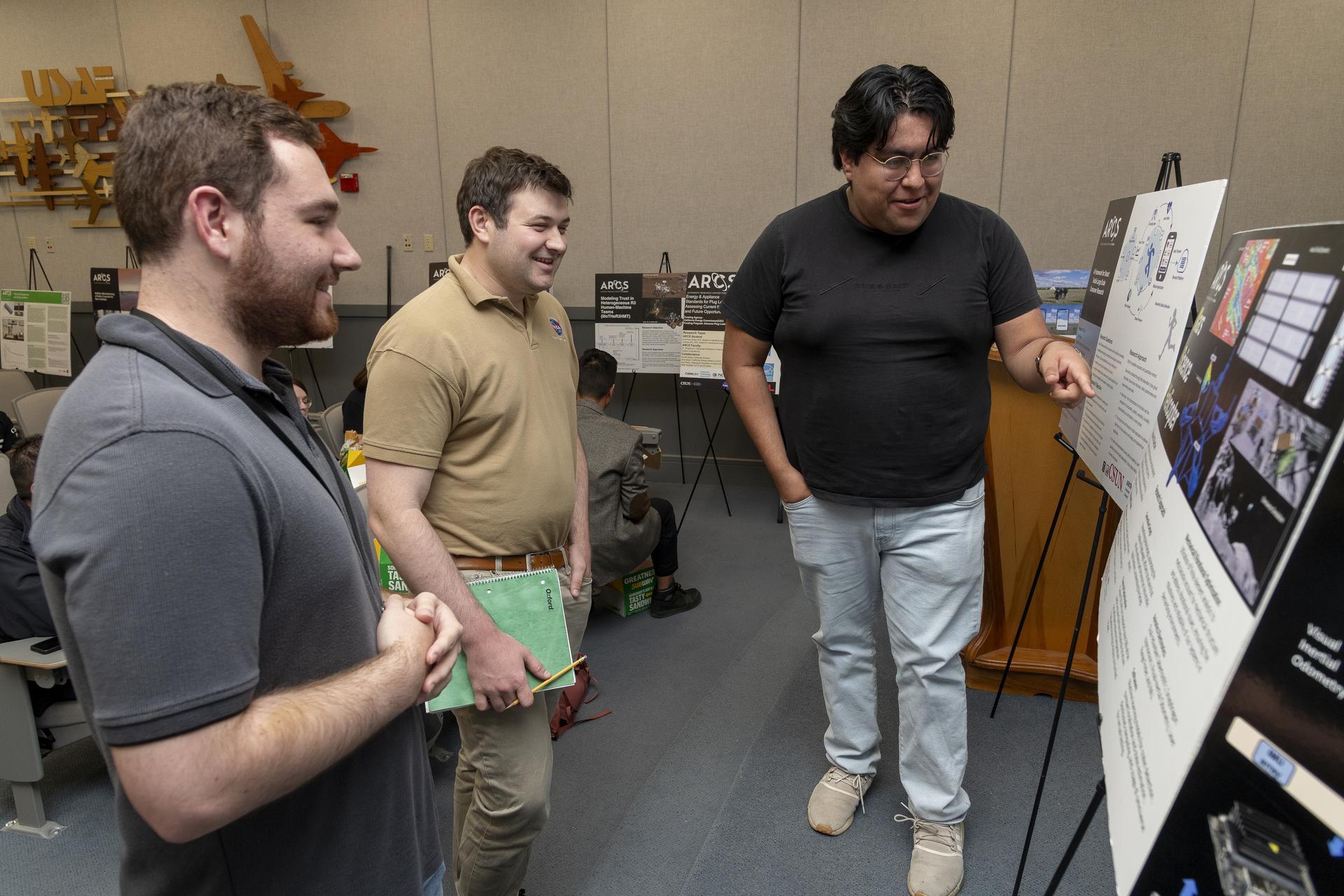
Two men from NASA’s Armstrong Flight Research Center in Edwards, California, ask Jared Carrillo, a student from the California State University, Northridge, Autonomy Research Center for science, technology, engineering, entrepreneurship, arts, humanities, and mathematics, about his work on the Mars Science Helicopter. Students displayed posters and answered questions about their technologies May 23 at the Air Force Test Pilot School auditorium on Edwards Air Force Base, California.
NASA/Steve Freeman
“The goal is to help minority-serving institutions develop relationships with NASA,” said Bruce Cogan, a NASA Armstrong Small Business Innovation Research program liaison for the agency’s Aeronautics Research and Mission Directorate. “We want students to make connections and learn how to use NASA processes to submit research proposals. Students could also supplement work in autonomy that NASA wants to pursue.”
Representatives from NASA’s Armstrong Flight Research Center in Edwards, California, attended the event, looking for potential collaborations with students where NASA Armstrong would provide the funding through sources such as the NASA Armstrong Center Innovation Fund and NASA’s Convergent Aeronautics Solutions project to advance technology.

Six students from the California State University, Northridge, Autonomy Research Center for science, technology, engineering, entrepreneurship, arts, humanities, and mathematics spoke about their Trust in Autonomy technology. The students from left are Aniket Christi, Julia Spencer, Dana Bellinger, Zulma Lopez Rodriguez, front, Jordan Jannone, and Samuel Mercado. The group answered questions about their technology May 23 at the Air Force Test Pilot School auditorium on Edwards Air Force Base, California.
NASA/Steve Freeman
Use of uncrewed systems will require development of advanced controllers, and ideas like trust in autonomy, or how people can trust what the computers are doing, and human-machine teaming on Mars and Europa missions are examples of potential partnerships, Cogan said.
Brad Flick, NASA Armstrong center director, and Tim Cacanindin, U.S. Air Force Global Power Bombers Combined Test Force deputy director, spoke at the event. Following the event, more than 50 students and faculty toured NASA Armstrong facilities.
NASA’s Minority University Research and Education Project Institutional Research Opportunity funds a multi-year grant for the Autonomy Research Center. NASA Armstrong, and NASA’s Jet Propulsion Laboratory in Southern California, co-sponsored the NASA grant.

Nhut Ho, director of the NASA-sponsored Autonomy Research Center for science, technology, engineering, entrepreneurship, arts, humanities, and mathematics at California State University, Northridge, left, spoke to Brad Flick, center director at NASA’s Armstrong Flight Research Center in Edwards, California. The men were attending a student poster event, where students showcased their technologies and answered questions May 23 at the Air Force Test Pilot School auditorium on Edwards Air Force Base, California.
NASA/Steve Freeman

